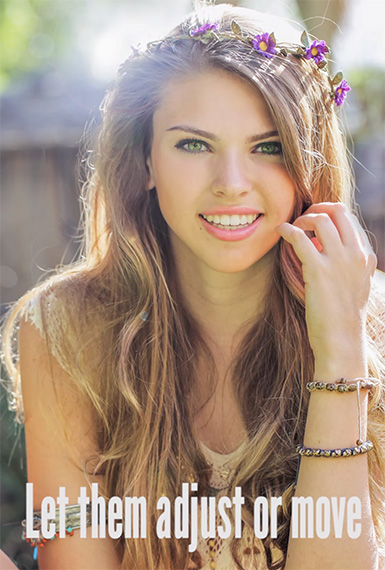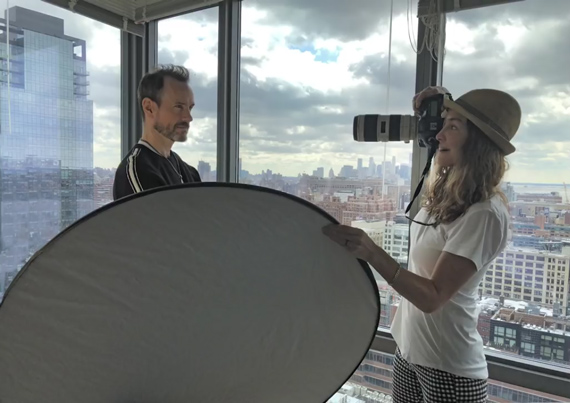“A camera adds ten pounds.” This saying is quite popular for a reason. How people look in a photograph is determined by how they react to a camera in front of them and by the lighting setup that the photographer has chosen. Multi-talented model, actress, director, and professional photographer Denice Duff shares her experience to give some portrait photography tips:
As Duff has shared in the video, people have three different fears when they get in front of the camera: that they will either look old, tired, or heavy. It’s the photographer’s job to make sure that this does not happen. How can this be done? A simple answer is to make clients feel comfortable.
Making the Client Feel Comfortable for Great Portraits
When clients feel comfortable, they make the entire process easier by striking better and natural looking poses. Duff shares the following basic tips to make the clients feel comfortable:
- Talk to them about their kids and pets. People tend to have a glow on their face whenever they talk about their pets or children.
- Rest their feet on a stool. As Duff demonstrates, when someone rests their feet on something, the body language changes to a comfortable pose.
- Start with a seated pose. If you start with a standing pose, clients will think more about the way they should stand and where to place their hands. By starting with a seated pose, people are less conscious about the posing part.
- Have them place their hands by their face and behind their neck. Duff’s experience has shown that people feel more at ease when they have their hands by their face and behind the neck. So ask them to gently place their hands on their face and on the back of their neck while making sure that they don’t press hard. Otherwise it can turn out to be a disaster of a pose.

Let your subject move around and use their hands.
- Have clients lean against something. While doing so, make sure that they’re not smooshing their body.
- Give directions. Not everyone is a professional model, and most of the time clients don’t know how to present themselves in front of a camera. To make the session comfortable for all, give directions. Ask them where to look, how to stand, where to turn, etc.
- Have a fun filled environment. To lift a person out of their fears, joke with them and pretend you’re shooting for a high end fashion magazine. Clients will then focus less on themselves and more on the photographer.
Lighting Setup for Better Portrait Photographs
While lighting is the most essential part of photography, a studio setup is not easily accessible to everyone. Duff shares the following tips on natural lighting setup for better portrait photographs:
- Window light is magical. By placing the client close to a window, you can get amazing lighting on the subject. To fill the shadows, something very cheap and simple, such as a piece of white foam can be placed in the opposite direction or under the chin. Doing so also creates a catch-light in the eye, adding life to the photograph. As illustrated in the image below, Duff uses her Canon 70-200 lens to get rid of the distracting background and uses a white reflector to fill in the shadows.

Make use of a reflector.
- Use fabrics for backgrounds. Duff uses solid colored polyester fabrics and gaffer tape to fix the fabrics on the wall to use them as backgrounds, and people can’t tell them from studio shots. They are also easy to carry around while traveling.
- Ask the person to squat down low. Light being reflected from the ground can be harsh on the person’s face when you’re shooting outdoors on a sunny day. Find some shade and have the person squat down low, close to the ground so their face is lit with an evenly diffused, flattering, soft light.
As a sign-off tip, here is what Duff has to say:
“There is actually a lot of room at the top for photographers, but people don’t always risk going there… Everybody has good gear, maybe, everybody’s got an iPhone, but not everybody is a professional photographer. And there is still so much room up at the top for we photographers to continue this glorious profession of giving people amazing photos that can help their business, that can help their life, and that just help show the world in a portal of your eyes and of your viewpoint.”
Like This Article?
Don't Miss The Next One!
Join over 100,000 photographers of all experience levels who receive our free photography tips and articles to stay current:






Leave a Reply